Spring has arrived in the southern hemisphere and the flowers are just bursting forth. Color has arrived like a splash of paint across the landscape canvas in my region here on the southernmost shores of Africa. What a beautiful time to relish the joy of life.
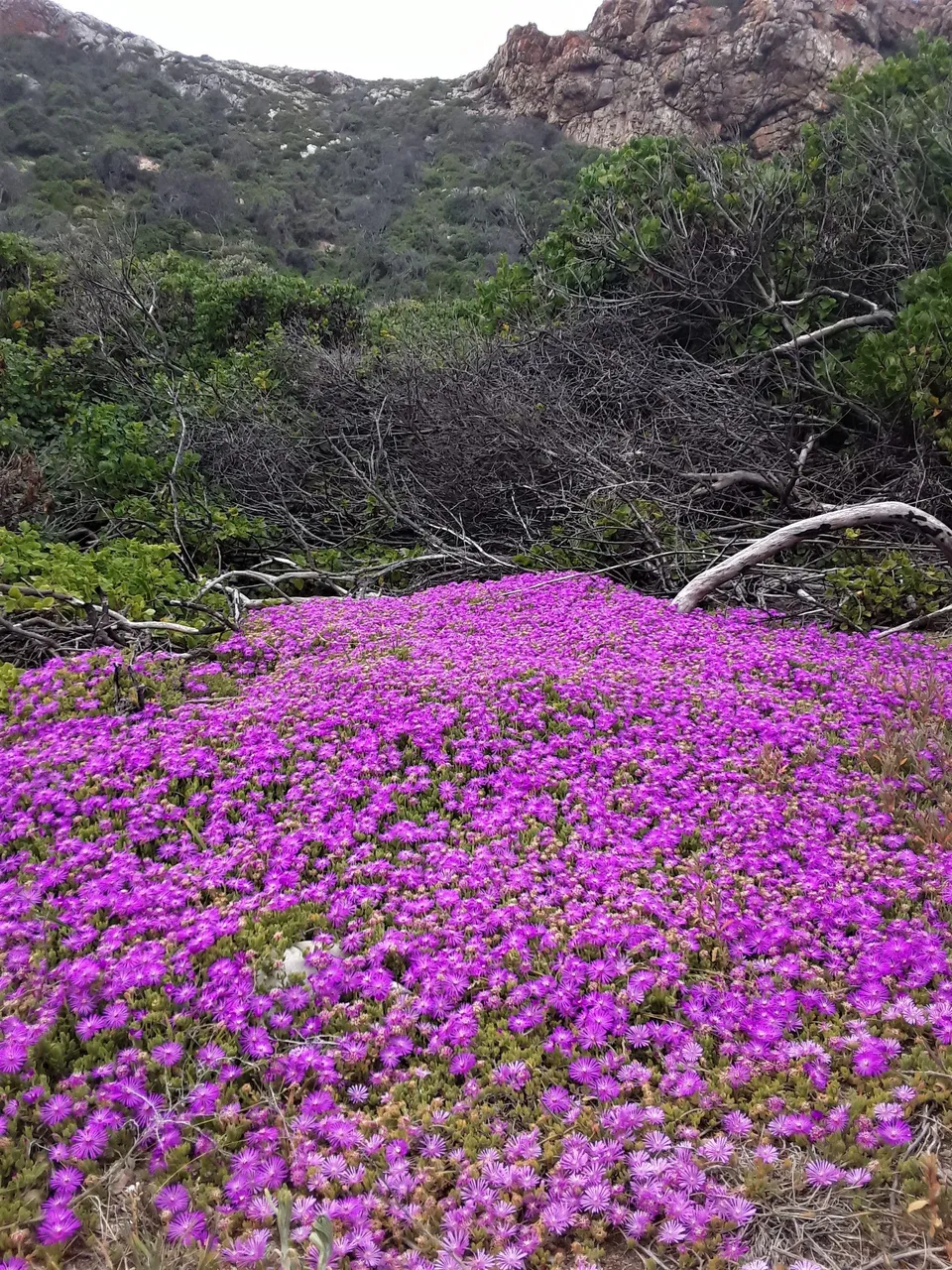
How's that for a pink carpet?
The Cape province, as this region of the continent is known, is the home to one of the plant kingdoms of the world called “Fynbos” meaning fine bush or delicate plant life. It is a unique type of flora and with the blossoming Spring flowers, it appears to be at its best right now.
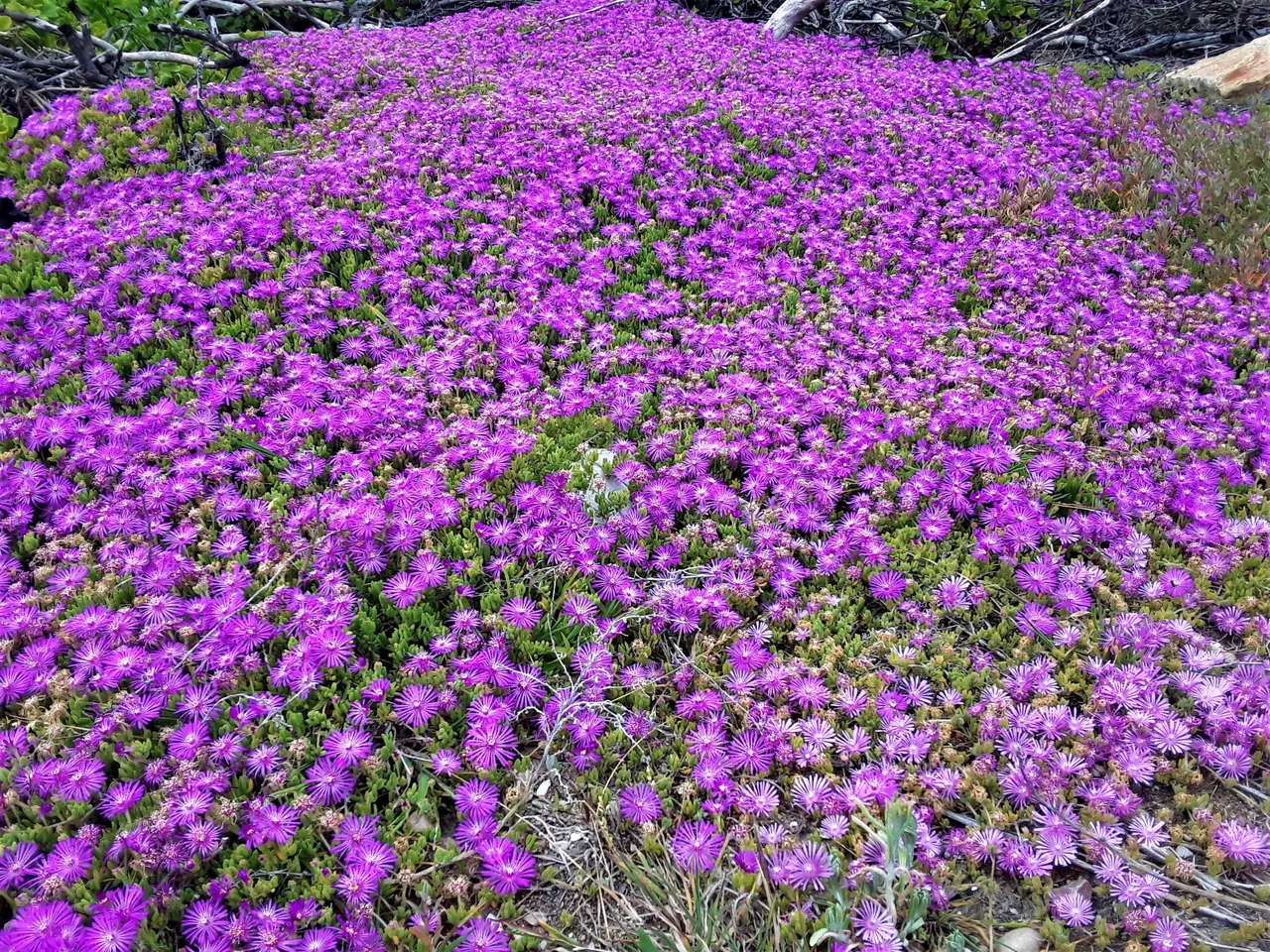
In fact this Fynbos plant kingdom, molded by the Mediterranean climate here at 34 degrees south latitude, consists mostly of small shrubs and succulents, as you can see in the photos I’ve taken of my local hiking spot. Although the plant life is generally dark green and appears initially quite unassuming and even bland from a distance, the small delicate flowers make a really impressive show once you go close up to actually see them.

Some have fragrance but not all. It’s not a major feature of the floral kingdom here it seems. But then there are those that make up for lack of smell by appearing in the most dazzling shocking pink color. It’s really quite a spectacle and my little phone camera really doesn’t do the scene justice. The eye just captures way more of the scene and heightened color schemes overall.
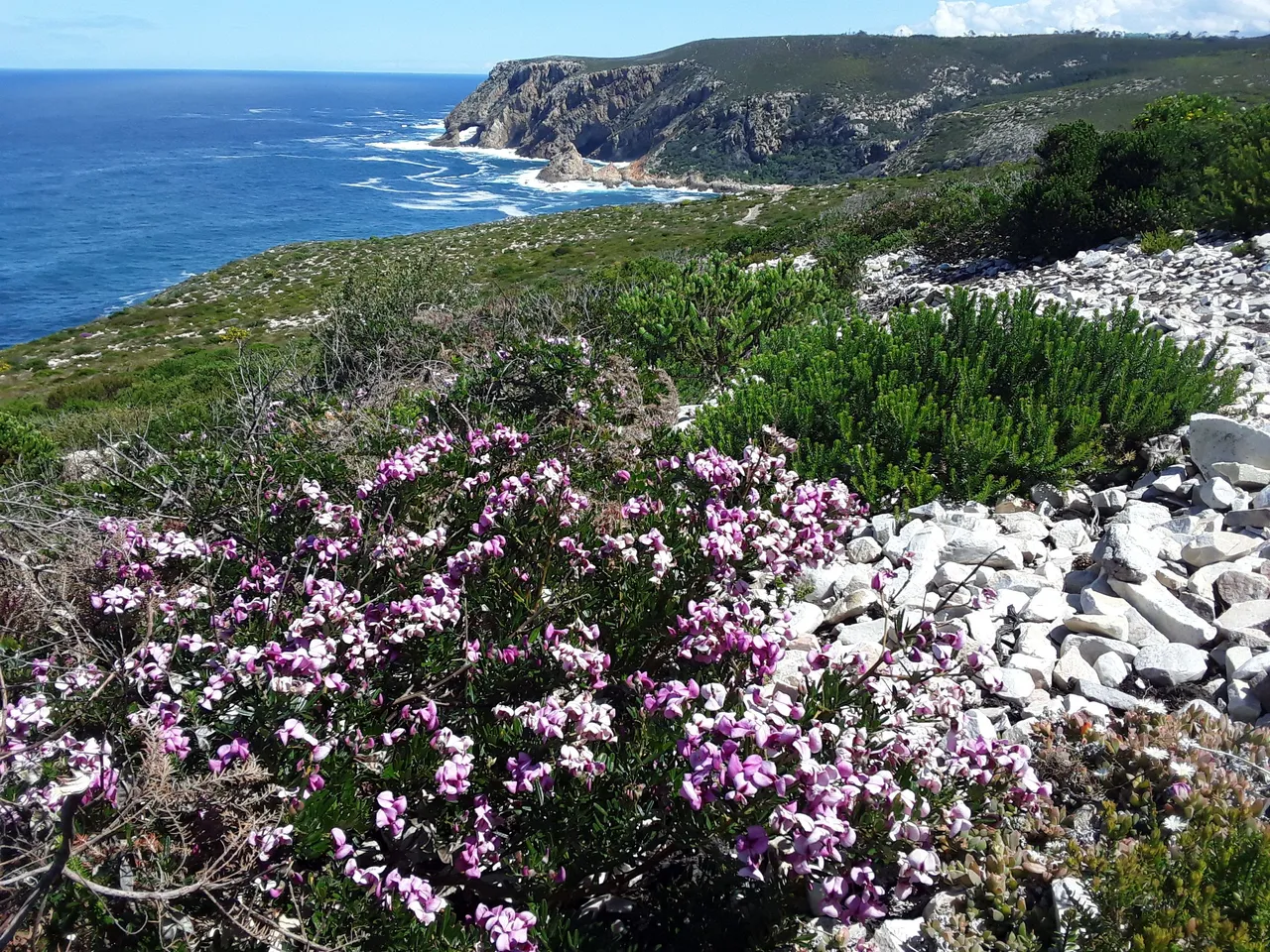
The region is quite rugged and windswept, with lots of direct sunshine so the floral kingdom has obviously adjusted to the environment, with its sparse soil, rocky landscape and relatively minimal rain. I presume it might be likened to the actual Mediterranean conditions up in the northern hemisphere, like those of Portugal or the southern coastal countries of Europe.
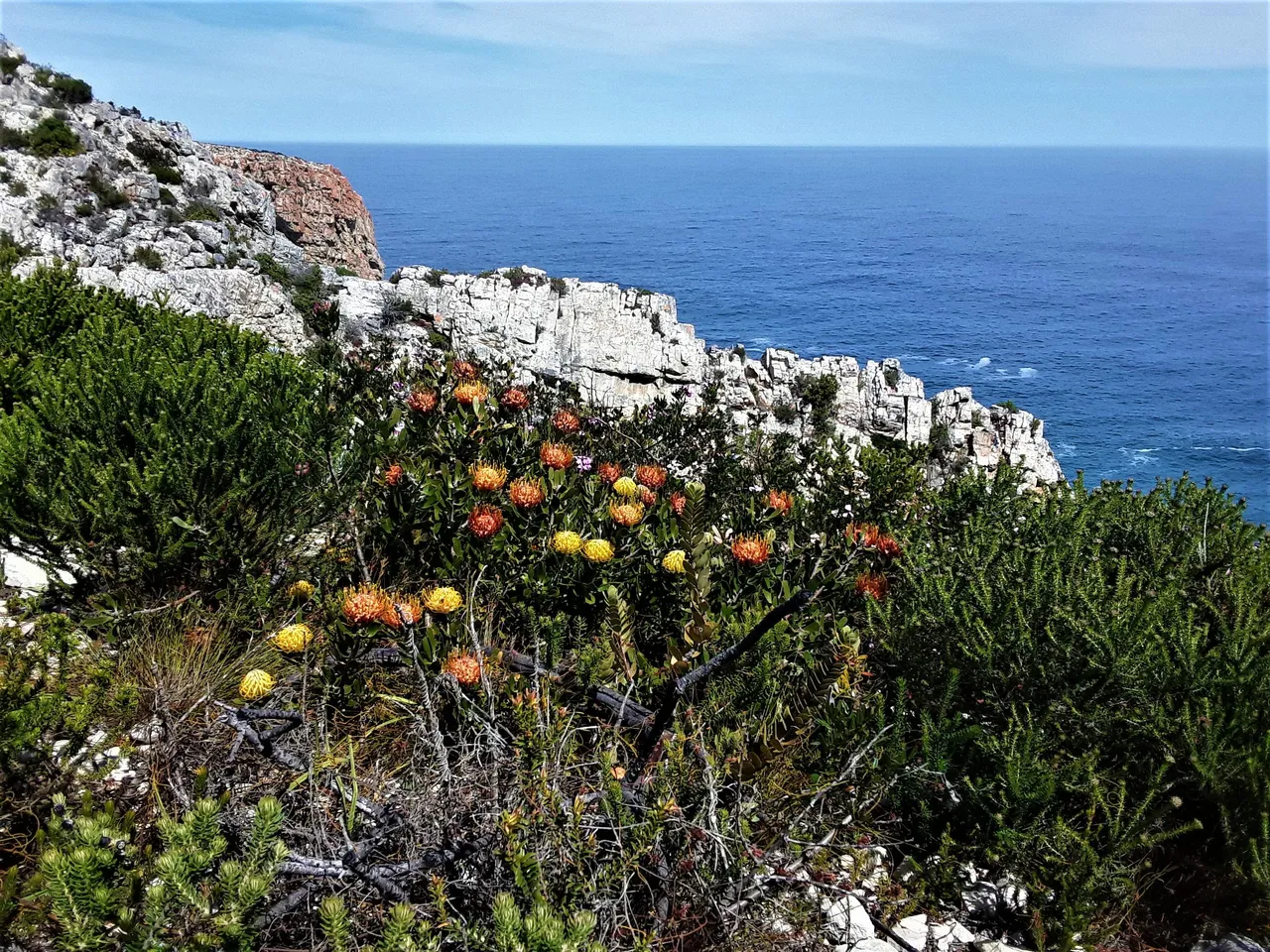
Unique indigenous species of the Fynbos floral kingdom, looking almost pre-historic.
We have absolutely no snow landing here ever so the plants thrive throughout the year, and have sunshine most days, even through winter. But now that Spring has arrived, they are in full bloom and one can really appreciate the added color on top of the otherwise drab olive-colored vegetation.
Curiously the local Fynbos floral kingdom is known to be perhaps the most diverse in the world, with as many different species of plants as you would find in the Amazon jungle. They are just so small and inconspicuous. However, as I walk along the cliff tops and climb down to the shoreline, it is possible to see different types of plant species every few hundred meters.
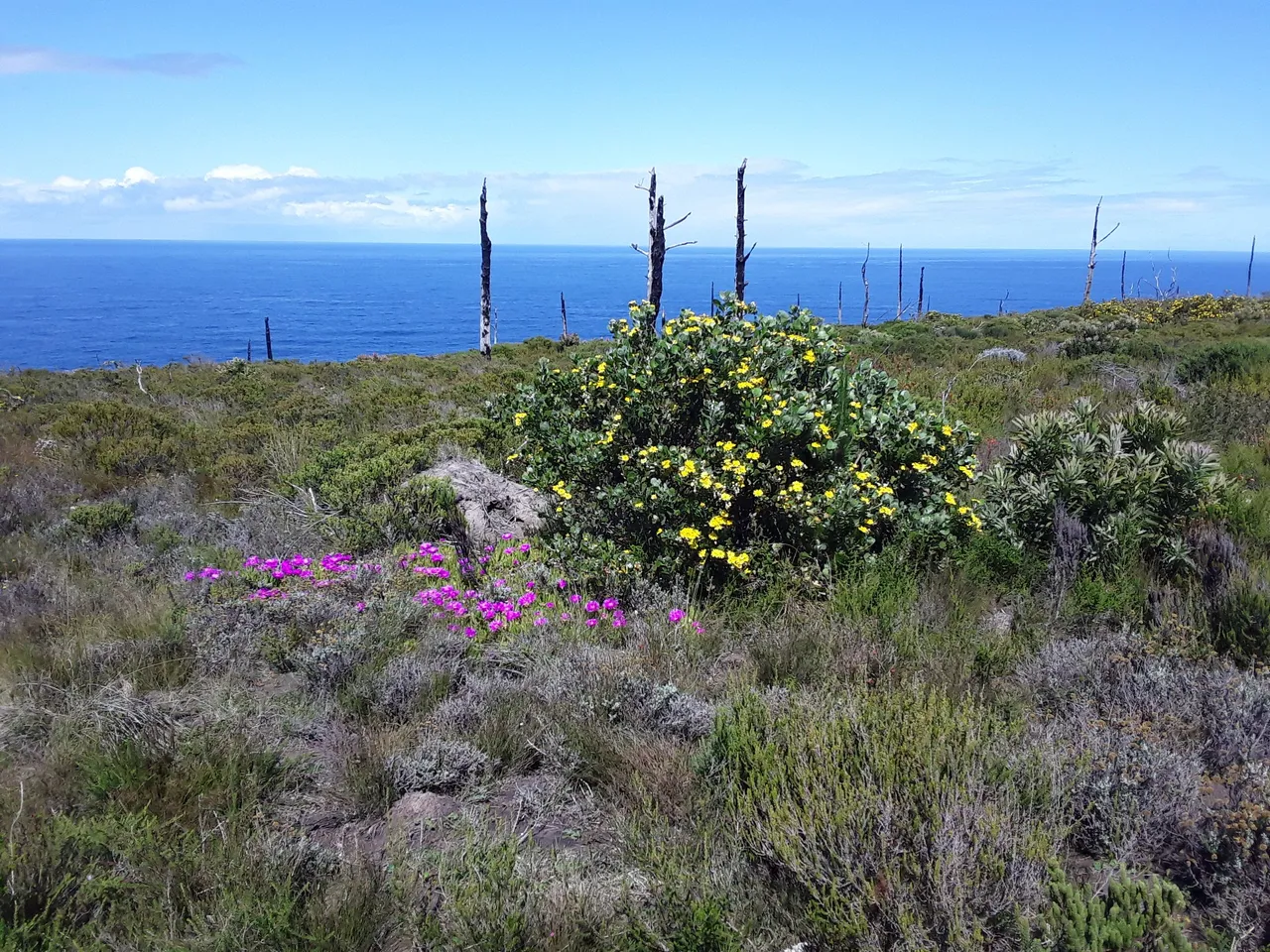
Another view from the top of the cliffs with popular Bitou bush in yellow, after which this region is named.
It looks like the differing plants put down roots on different rocky outcrops or slopes of the hillside according to the various micro-climates that they provide. So some species only appear in small localized patches and are not seen any more throughout the region. Some are prolific of course but these delicate little Fynbos species are really selective and as a result might actually be quite scarce. They are actually quite sensitive to subtle changes in conditions and appear to only thrive in very specific conditions which vary from one cliff fact to another.
Some of these plant species are known by the original African tribal inhabitants to have medicinal properties. Particularly the Khoi/San or Bushmen tribes that roamed this coastline freely up until the 1650s, when the Dutch settlers and colonizers first arrived, would use certain plants for various healing properties. These Bushmen are an ancient stone age culture which are distinctly different from the mass of Bantu or Nguni black African indigenous population that we may be more familiar with.

Indigenous succulents popular in this region.
Those Bantu tribes actually migrated here hundreds of years ago from central Africa generally, and actually never really settled here this far south-west of the continent, right at the furthest point, known as the Cape province today, in which Cape Town is the most well-known city. I’m about 550km to the east of Cape Town city, along the coastline and there are still Bushman archaeological sights dating back thousands of years.
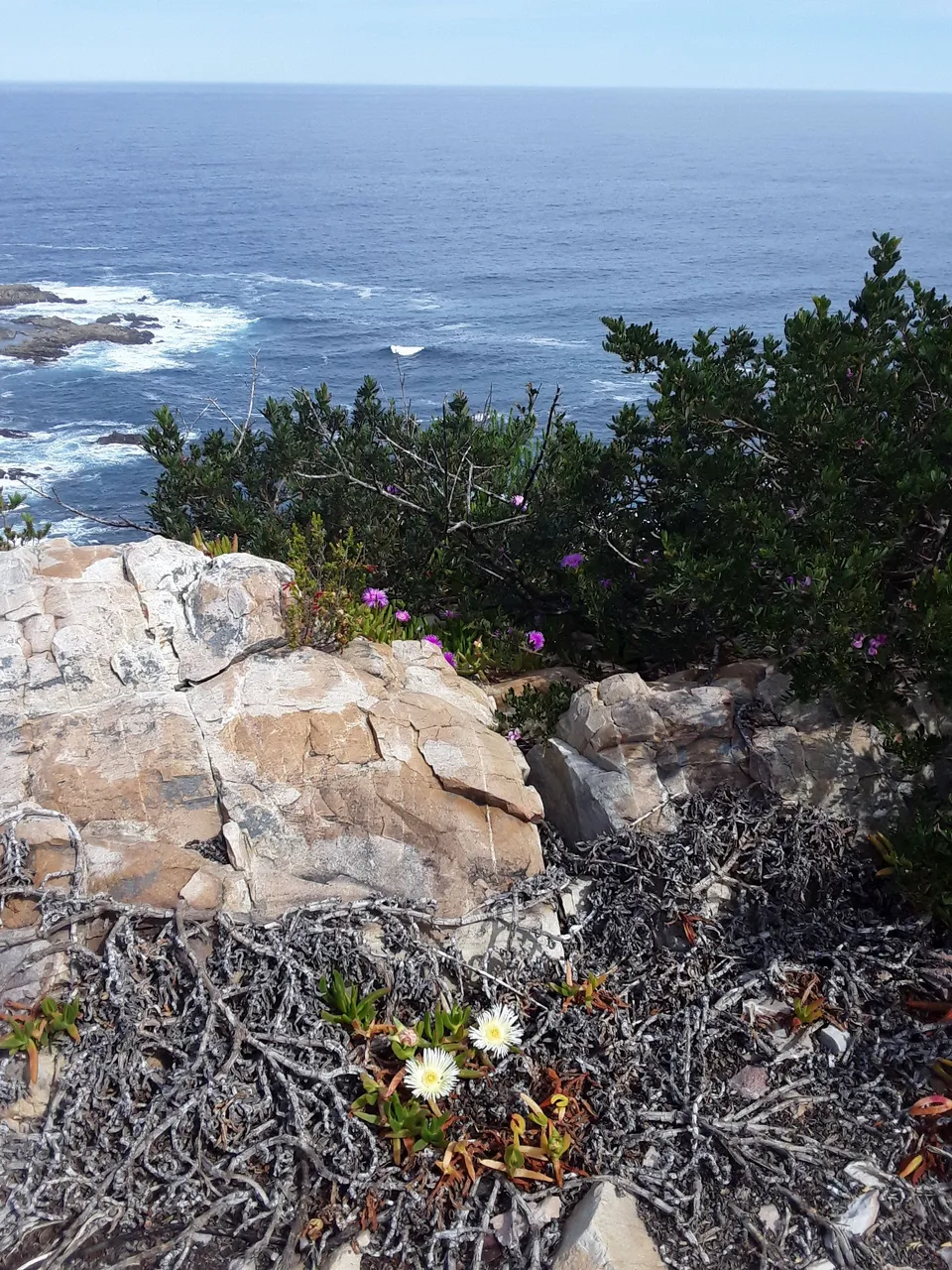
So the original indigenous native population of this specific area are not black Africans as we normally know them but rather this unique race of smaller Bushmen, known as the Khoi or San people. They appear to date back to the dawn of time and were still roaming around almost naked when the Dutch settlers arrived in the 1650s. In fact they were so free that they never had a concept of ownership or land boundaries in their original culture. They simply roamed freely along the hundreds of kilometers of shoreline, sometimes herding cattle but never really claiming ownership because there was simply no need presumably. There were no other people around and so no need for fences or property rights.
In other words this specific region along the southernmost shoreline of Africa was a type of paradise, where the climate was so mild that little clothing was needed and there was so much space to roam around freely that the ancient stone age Bushmen race of indigenous people remained that way for millennia. And they thrived off the local Fynbos plant species of which many are apparently valuable for food and medicine. I know little about it but I can easily tap into the feeling of freedom and wide open space along with a sense of ease and no anxiety that they must have existed in.
There were, of course, leopards and perhaps other big cats around, as well as elephants on this coastline back then but obviously they lived in relative harmony with the wondering nomadic tribes who would probably follow a cyclic seasonal migration pattern up and down along the coast. How different our Eurocentric existence is compared to those “noble savages” as western scholars might have originally called them. I sometimes wonder, especially when comparing our modern world to theirs, who was the real savage?
(photos my own)
